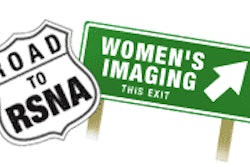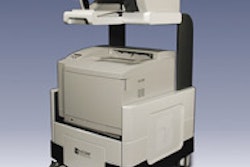Chicago - Results of the International Breast MRI Consortium (IBMC) Trial reinforce previous studies that suggest MRI can identify breast tumors missed by mammography, but the IBMC results are not the final word on the MRI-mammography debate.
Lead investigator Dr. Constance Lehman, Ph.D., assistant professor and director of breast imaging at the University of Washington Medical Center in Seattle, told Auntminnie.com that in "this era of multimodality imaging and fusing results, neither referring physicians nor patients should take one test result over the other. A negative finding on MRI does not negate a positive finding on mammography, nor does a positive MRI override a negative finding on mammography."
When results are conflicting, "the radiologist should review the findings and make a recommendation. It is that recommendation -- the one from the radiologist -- that should be followed," Lehman said. Often, conflicting results are seized upon by referring physicians or patients "whose goal is to find a way to avoid biopsy," she noted.
Moreover, even though in this study MRI had a 1.1% diagnostic yield while mammography had a 0.3% diagnostic yield, "it is not time to recommend MR as a screening tool for the general population."
It is difficult to consider MRI versus mammography without running into some hard economic facts: MRI is reimbursed at about $850 to $1,000, while a typical reimbursement for mammography is $85 to $100, Lehman said. "A tenfold increase in price cannot be overlooked."
The study is unique in that the 13 centers included private practices as well as academic centers. "We think this design more closely reflects clinical practice," she said. The study enrolled high-risk women -- women who had a 25% increased lifetime risk of breast cancer based on a strong family history or BRCA I/II status.
The study included 367 women, mean age 25. All the women underwent clinical breast exam, mammography, and MRI.
"There were four cancers found, three were detected only on MRI and one was found on both MRI and mammography," she said. Thirty-one women were positive on MRI only, 23 of whom had biopsies performed, while seven women were only positive on mammography with three undergoing biopsies.
Three of the cancers were infiltrating ductal carcinomas, and one was a ductal carcinoma in situ.
"The bottom line is that MRI is more sensitive than mammography," said Dr. Michael Brant-Zawadski, medical director of radiology at Hoag Memorial Hospital in New Port Beach, CA. "But the best results are achieved when both are used together. It appears that we need to encourage more people to use a multimodality approach." Brant-Zawadski was not involved in the study, but he moderated the RSNA press conference where the results were presented.
By Peggy Peck
AuntMinnie.com contributing writerDecember 2, 2004
Related Reading
MRI shows strength in breast tumor detection and quantification, June 7, 2004
Annual breast cancer screening may not suffice for BRCA-positive women, April 12, 2004
Women with genetic history of breast cancer benefit from MR screening, November 30, 2003
Copyright © 2004 AuntMinnie.com



















